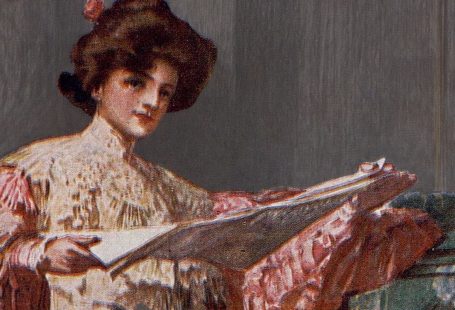The first recorded mention of women’s cricket was in 1745, in Surrey. We searched our Archive for early mentions of women’s cricket, and we came across a treasure trove of articles describing the early history of the sport.
Harrow versus Pinner | Graphic | 18 August 1888
One of these comes from the Sherborne Mercury, published in August 1849. It describes a match between ‘nine married ladies’ and ‘nine single ladies’ played at Picket Post, in the New Forest. The single ladies were defeated by one run only, the married ladies having scored fifty runs, and the single forty-nine. The players were dressed all in white, with the married ladies wearing blue trimmings, and the single pink.
The single ladies played with a great deal of spirit, but the matrons were one too many for them. One of the young ladies with a sigh said, “Ah, I wish I were married, for then I should have won.”
Sherborne Mercury | 11 August 1849
This custom of married women versus single women taking on each other in the cricket format is seen elsewhere in the British Isles. The Morning Advertiser, July 1860, reports on the annual cricket match ‘between 11 single and 11 married ladies of Littlehampton,’ Sussex.
The annual cricket match, between 11 single and 11 married ladies of Littlehampton, was played on Monday last, in a field adjoining Mr Henly’s hotel on the beach, and attracted a large concourse of persons. On the present occasion the game was in favour of the married, as last year it was won by the single ladies. Miss Glover, of the above hotel, provided tea, &c. for the party, and after the match, the lads and lasses danced on the green to an excellent quadrille band provided for the occasion, and the remainder of the evening was spent right merrily.
One Reverend C S Bere, during the Cricketers’ Supper held in Tiverton, Devon, attests to the phenomena of women playing cricket, Tiverton Gazette (Mid-Devon Gazette), November 1861. Speaking at the supper, he boasts of the ‘practical proof that they could engage in the game. He had seen in his own parish a match between eleven young ladies and eleven girls.’
Ally Sloper’s Half Holiday | 24 April 1886
It look a little while for women to play cricket beyond British shores. According to the Lakes Chronicle and Reporter, the first ladies’ cricket match was played in Australia in 1886. A large crowd, numbering around one thousand spectators, attended this match at the Association Cricket Ground, ‘the majority of those present being ladies.’
Unlike the first two matches described, these teams were not split according to their marital status. The two teams were captained by the Gregory sisters; whilst one team wore cardinal and blue colours (the Siroccos), and the other black and gold (the Fernleas).
Harrow versus Pinner | Graphic | 18 August 1888
The match consisted of two innings each, with the Siroccos scoring 83 in their first outing, the Fernleas responding with 41. But the Siroccos could only muster 54 in their second innings, whilst the Fernleas reached 93-8 before stumps were called and the game ended in a draw.
The report lauds Miss R Dean for her all-round cricket, and ‘such excellence in all departments of the game that many players in our senior clubs might envy.’ Although the wicket-keeping and fielding was described as good, allegedly ‘the ladies, with several exceptions, could not throw.’
Back in England in 1886, women’s cricket had truly taken off, the Sheffield Independent speculating that it might be ‘among the features of next season,’ citing the success of the Marquis of Abergavenny’s daughters and their cricket teams at Eridge Castle, where ‘a very good quality of cricket is to be found.’
Harrow versus Pinner | Graphic | 18 August 1888
Of course, women’s cricket has gone from strength to strength right up until the modern day, but these women of the nineteenth century were true trailblazers, and it is fascinating to discover their stories within the pages of the British Newspaper Archive.









